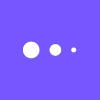22 Top Website Analytics Tools
In today's digital age, having access to detailed website analytics is crucial for any website owner or marketer. Website analytics tools provide valuable insights into website traffic, user behavior, and engagement, allowing businesses to make data-driven decisions to improve their online presence. Selecting the right website analytics tool requires thorough research and careful consideration. To assist you in this process, I have compiled a comprehensive list of the top analytics software available. As a user of many of these providers myself, I am well-equipped to answer any questions you may have.

Privacy-focused website analytics from a sustainable company. A GDPR compliant, Google Analytics alternative.
Visit website➔
Adobe Analytics lets you mix, match, and analyze data from any digital point in the customer journey. With in-depth analysis, versatile reporting, and predictive intelligence, you get the insightful foundation you need.
Visit website➔
Amplitude is a real-time digital data analytics software for both web and mobile, used to analyze visitors' data behavior.
Visit website➔
Chartbeat, the content intelligence platform for publishers, empowers media companies to build loyal audiences with real-time and historical editorial analytics across desktop, social, and mobile platforms.
Visit website➔
Clicky's privacy-friendly, real-time website analytics service is simply the best way to monitor, analyze, and react to your website's traffic in real time.
Visit website➔
Modern restaurant analytics. FoxMetrics, a marketing analytics and personalization software company, puts powerful conversion tools right at your fingertips.
Visit website➔
FullStory is a web-based digital intelligence system that helps optimize the client experience. It enables users to track and monitor each customer activity.
Visit website➔
Google Analytics is a web analytics service offered by Google that tracks and reports website traffic, currently as a platform inside the Google Marketing Platform brand.
Visit website➔
GoSquared Analytics gives you a collection of easy-to-understand real-time dashboards to help you understand your website.
Visit website➔
Heap is the only digital insights platform that gives you complete understanding of your customers’ digital journeys, so you can quickly improve conversion, retention, and customer delight.
Visit website➔
Hotjar is a product experience insights tool that gives you behavior analytics and feedback data to help you empathize with and understand your customers.
Visit website➔
Kissmetrics is a person-based analytics product that helps you identify, understand, and improve the metrics that drive your online business.
Visit website➔
Lucky Orange includes heatmaps, visitor recordings, chat, announcements, surveys, form analytics, conversion funnels and more.
Visit website➔
Matomo, formerly Piwik, is a common free and open source web analytics application to track online visits to one or more websites and display reports on these visits for analysis.
Visit website➔
Mixpanel is primarily a product analytics platform, designed to give marketers and product teams insights into how to best acquire, convert, and service.
Visit website➔
Pendo is a product-analytics app built to help software companies develop products that resonate with customers.
Visit website➔
Pirsch is a simple, cookie-free, and open-source web analytics solution that easily integrates into your website or backend.
Visit website➔
Plausible is lightweight and open source web analytics. No cookies and fully compliant with GDPR, CCPA and PECR. Made and hosted in the EU, powered by European-owned cloud infrastructure 🇪🇺
Visit website➔
Simple Analytics is a simple Google Analytics alternative. One dashboard to instantly see how many visitors are coming to your website, where they come from and what they do once they're there. Without cookies.
Visit website➔
Smartlook is a cloud- and mobile-based quantitative analytics solution that helps businesses of all sizes with user behavior and insights.
Visit website➔
StatCounter is a simple but powerful real-time web analytics service that helps you track, analyse and understand your visitors so you can make good decisions.
Visit website➔
Wide Angle Analytics gives you the complete picture of your website visitors and what keeps them engaged. GDPR compliance, privacy-first approach and unfair Adblock avoidance create a winning formula.
Visit website➔Good to know...
Things to consider when looking for a new analytics tool
When evaluating a website analytics tool, it's important to consider the following key features:
- Data collection: The tool should be able to collect data from your website in real-time, providing accurate and up-to-date insights into your website's performance.
- Customization: The tool should allow you to customize your analytics tracking to meet the specific needs of your website, such as setting up conversion goals and tracking specific metrics.
- Data analysis: The tool should be able to analyze data and provide detailed insights into user behavior, such as page views, bounce rates, and conversion rates.
- Integration: The tool should integrate with your existing website, so you can easily set up and run analytics without having to make any major changes to your code.
- Reporting: The tool should provide detailed reporting, including data visualizations and easy-to-understand metrics, to help you understand the results of your analytics.
- Support: The tool should have a dedicated support team that can help you troubleshoot any issues you encounter, and should also offer training and resources to help you get the most out of the tool.
- Scalability: The tool should be able to scale to meet the needs of your growing business, and should offer additional features and integrations as you need them.
- Pricing: The tool should be reasonably priced and offer flexible pricing plans to fit your budget and analytics needs.
Ultimately, the best website analytics tool for you will depend on the specific needs of your business, so be sure to do your research and consider all of these factors before making a decision.
How much does analytics software cost?
The cost of website analytics software can vary widely depending on the specific software, features, and the size and needs of your organization. Here are some examples of website analytics software and their approximate costs per month:
- Google Analytics: This is a free website analytics tool that provides basic insights into website traffic, user behavior, and audience demographics.
- Matomo Analytics: This is a self-hosted website analytics software that offers a range of features, including real-time analytics, custom reports, and GDPR compliance. Pricing starts at $29 per month for the cloud-hosted version, or free for the self-hosted version.
- Adobe Analytics: This is a powerful web analytics tool designed for large enterprises. Pricing varies depending on your needs, but the Small Business plan starts at $500 per month, while the Enterprise plan requires a custom quote.
- Mixpanel: This is a user behavior analytics tool that provides insights into how users interact with your website or mobile app. Pricing is free for a the free plan. With the growth plan starting at $20 per month, or a custom quote for the Enterprise plans.
It's important to note that these prices are subject to change and may not include additional fees for implementation, training, or consulting services. It's best to research different website analytics software options and contact the provider directly for pricing and feature details.
How do website analytics tools handle privacy and data security, and what are some best practices for using them responsibly?
Website analytics tools handle privacy and data security in a variety of ways, and it is important for website owners and marketers to understand these measures to ensure that they are using these tools responsibly.
First and foremost, website analytics tools should adhere to industry standards and regulations around data privacy and security, such as the General Data Protection Regulation (GDPR) and the California Consumer Privacy Act (CCPA). This includes obtaining user consent for data collection and processing, providing clear and transparent privacy policies, and implementing appropriate security measures to protect user data.
Some common best practices for using website analytics tools responsibly include:
- Minimizing the amount of personal data collected: Website owners and marketers should only collect the data that is necessary for their analytics needs and avoid collecting sensitive personal information.
- Anonymizing data: Website analytics tools should anonymize user data to protect user privacy. This can be done by removing identifying information, such as IP addresses or user IDs.
- Securing data transmission and storage: Website analytics tools should use secure transmission protocols, such as HTTPS, and implement appropriate security measures to protect user data during storage and processing.
- Regularly reviewing and updating privacy policies: Website owners and marketers should regularly review and update their privacy policies to ensure that they are up-to-date and accurate.
- Providing clear and transparent disclosures: Website owners and marketers should provide clear and transparent disclosures about data collection and use, including how data is collected, what data is collected, and how it is used.
By following these best practices, website owners and marketers can use website analytics tools responsibly and protect user privacy and data security.
How can website analytics tools be integrated with other marketing and web development tools and platforms?
Website analytics tools can be integrated with other marketing and web development tools and platforms in a variety of ways, allowing businesses to streamline their processes and gain a more holistic view of their online performance. Here are some common integration options:
- Advertising platforms: Website analytics tools can be integrated with advertising platforms, such as Google Ads or Facebook Ads, to track the performance of ad campaigns and optimize targeting and bidding strategies.
- Content management systems (CMS): Website analytics tools can be integrated with CMS platforms, such as WordPress or Drupal, to track user engagement and behavior on specific pages or posts.
- Customer relationship management (CRM) software: Website analytics tools can be integrated with CRM software, such as Salesforce or HubSpot, to gain insights into customer behavior and engagement across different channels.
- E-commerce platforms: Website analytics tools can be integrated with e-commerce platforms, such as Shopify or Magento, to track sales and revenue data and optimize conversion rates.
- Email marketing platforms: Website analytics tools can be integrated with email marketing platforms, such as Mailchimp or Constant Contact, to track email campaign performance and optimize targeting and messaging.
- Social media platforms: Website analytics tools can be integrated with social media platforms, such as Facebook or Twitter, to track engagement and performance metrics for social media campaigns.
By integrating website analytics tools with other marketing and web development tools and platforms, businesses can gain a more comprehensive understanding of their online performance and make data-driven decisions to optimize their strategies.
What kind of data do website analytics tools provide?
Website analytics tools provide a wide range of data related to website performance, user behavior, and marketing effectiveness. Here are some of the most common types of data that website analytics tools provide:
- Website traffic: Website analytics tools provide data on the number of visitors to a website, including unique visitors, pageviews, and session duration.
- User behavior: Website analytics tools provide data on user behavior, such as bounce rate, time on page, and conversion rate.
- Traffic sources: Website analytics tools provide data on where website traffic is coming from, including search engines, social media, and referral sources.
- Demographics: Website analytics tools can provide data on the demographics of website visitors, including age, gender, and location.
- Devices and browsers: Website analytics tools provide data on the devices and browsers used by website visitors, which can help optimize website design and functionality.
- Marketing performance: Website analytics tools provide data on the effectiveness of marketing campaigns, such as click-through rates and conversion rates.
- E-commerce data: Website analytics tools can provide data on e-commerce transactions, including sales revenue, product performance, and cart abandonment rates.
By analyzing these types of data, businesses can gain insights into website performance, user behavior, and marketing effectiveness, and make data-driven decisions to optimize their strategies.